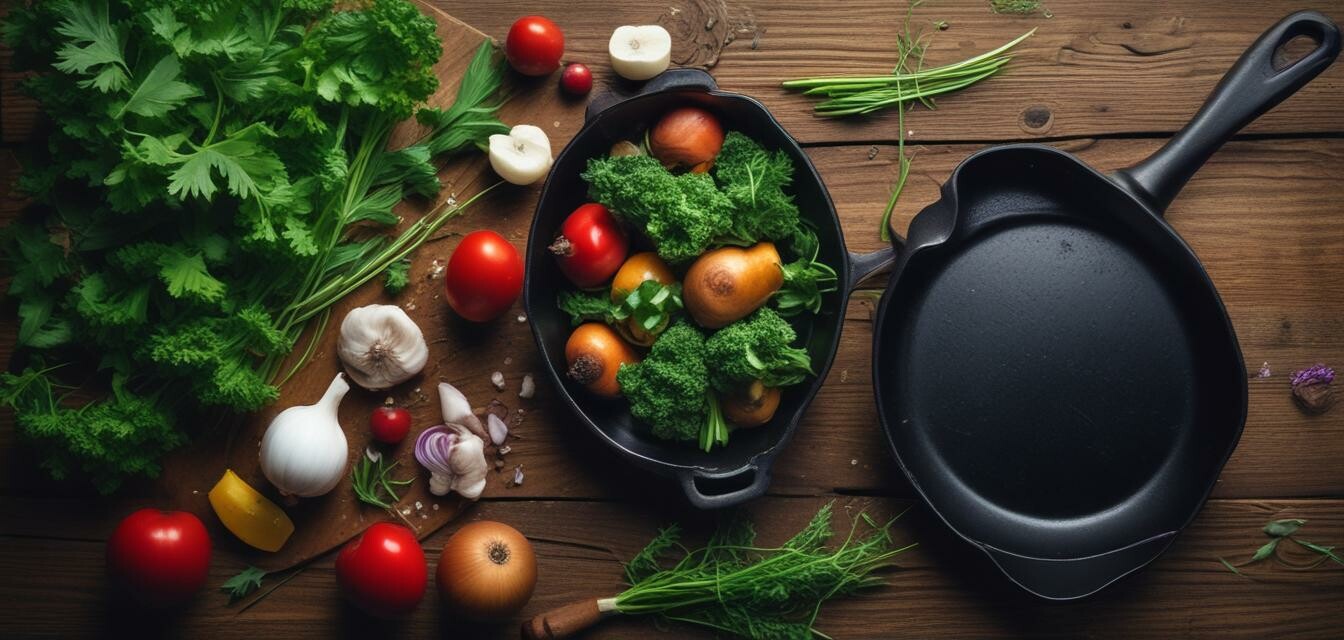
Techniques for Cooking with Cast Iron
Key Takeaways
- Cast iron cookware requires proper seasoning for optimal non-stick performance.
- Regular maintenance extends the life of cast iron pans.
- Understanding the heat distribution of cast iron enhances cooking precision.
- Versatile for stovetop and oven use, cast iron is perfect for a variety of dishes.
Cast iron cookware is beloved by many home cooks for its remarkable heat retention and versatility. Whether you're searing meats or baking cornbread, using cast iron can elevate your culinary creations. In this article, we'll explore the best practices for using, seasoning, and maintaining your cast iron cookware.
Why choose cast iron?
Cast iron has been a staple in kitchens for centuries due to its unique properties:
- Durability: When cared for properly, cast iron cookware can last a lifetime.
- Heat retention: Excellent for searing and slow cooking.
- Natural non-stick surface: When seasoned correctly, food easily releases.
- Versatility: Works on the stovetop, in the oven, and even on outdoor grills.
Seasoning your cast iron
One of the most vital techniques of working with cast iron is seasoning. This process creates a non-stick surface and protects it from rust.
Steps to season cast iron
- Preheat your oven to 450°F (230°C).
- Clean the pan with hot soapy water and a scrub brush.
- Dry the pan thoroughly to avoid rusting.
- Apply a thin layer of vegetable oil or shortening to the pan.
- Place the pan upside down in the oven (use a baking sheet on the rack below to catch drips).
- Bake for about an hour, then turn off the oven and let the pan cool inside.
Cooking techniques with cast iron
Understanding how to cook with cast iron will improve your dishes significantly. Below are some essential techniques:
| Technique | Description |
|---|---|
| Searing | Preheat the skillet to create a perfect crust on meats. |
| Baking | Use the skillet for baked goods like cornbread or frittatas. |
| Slow Cooking | Perfect for stews and braises as it retains heat evenly. |
| Grilling | A cast iron grill pan allows indoor grilling with great results. |
Maintenance tips
Caring for your cast iron cookware is straightforward and important for longevity:
Tips for maintaining cast iron
- Clean after use: Avoid soap; a stiff brush or salt works best.
- Dry immediately: Prevent rust by drying the pan thoroughly.
- Re-season regularly: Keep the non-stick surface intact.
- Store in a dry place: Avoid moisture to keep rust at bay.
Common mistakes to avoid
Utilizing cast iron requires some precaution:
- Using high acidity: Avoid cooking acidic foods frequently, as they can damage the seasoning.
- Putting it in the dishwasher: Always wash by hand to maintain integrity.
- Not preheating: Cold pans can lead to uneven cooking.
Conclusion
Cooking with cast iron can greatly improve your culinary skills while adding a rustic touch to your dishes. With proper seasoning, maintenance, and understanding of how to use your cast iron cookware, you'll be well on your way to making delicious meals. For more cooking tips and techniques, check out our Cooking Tips & Techniques category.
Pros
- Durable and long-lasting cookware.
- Excellent heat retention and distribution.
- Becomes better with use due to seasoning.
Cons
- Requires regular maintenance and seasoning.
- Heavy and can be cumbersome to handle.
- Susceptible to rust if not cared for properly.
If you want to dive deeper into the world of cooking essentials, check out our guides on Cookware Sets and Baking Essentials.